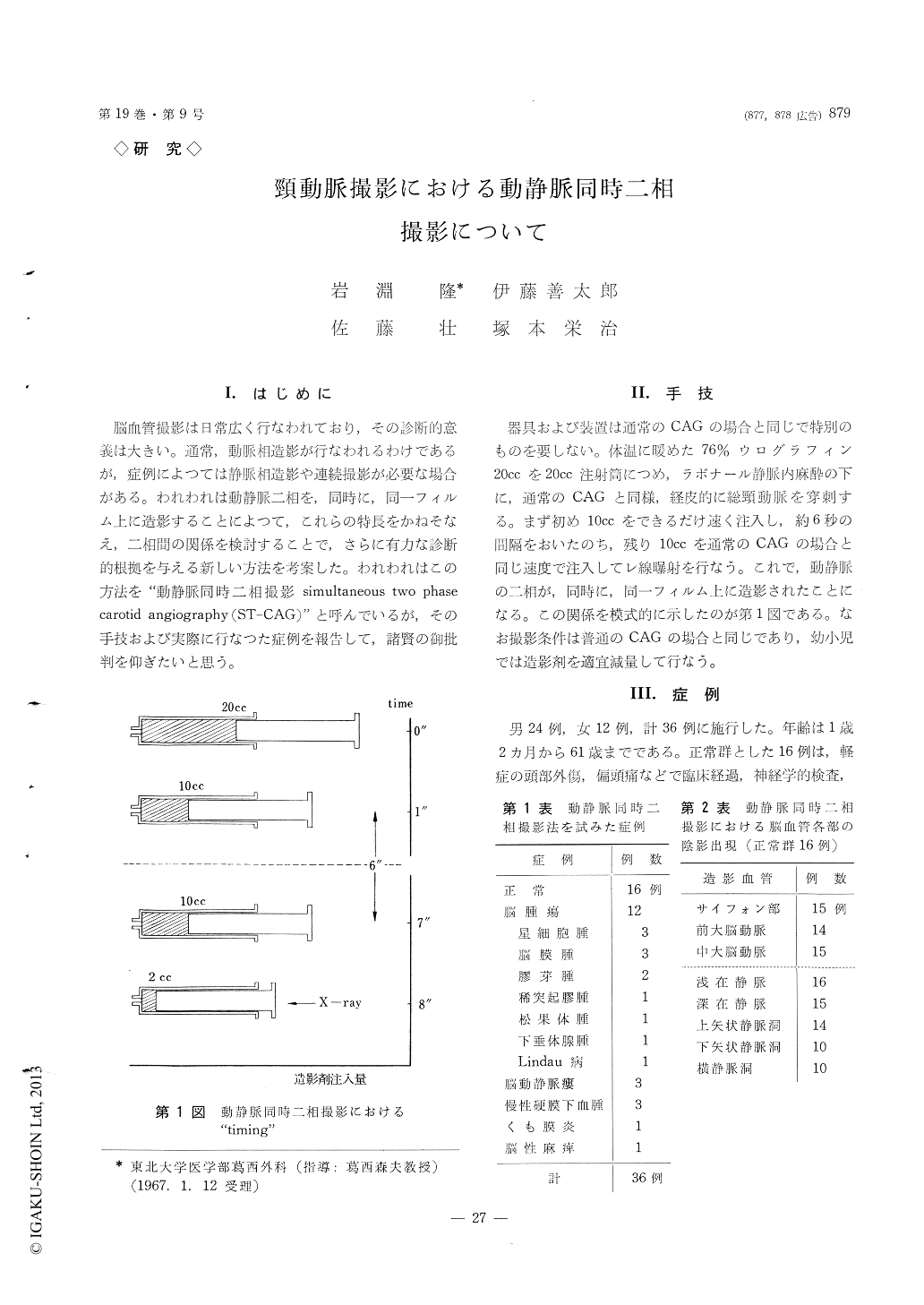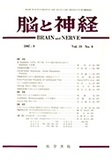Japanese
English
- 有料閲覧
- Abstract 文献概要
- 1ページ目 Look Inside
I.はじめに
脳血管撮影は日常広く行なわれており,その診断的意義は大きい。通常,動脈相造影が行なわれるわけであるが,症例によつては静脈相造影や連続撮影が必要な場合がある。われわれは動静脈二相を,同時に,同一フィルム上に造影することによつて,これらの特長をかねそなえ,二相間の関係を検討することで,さらに有力な診断的根拠を与える新しい方法を考案した。われわれはこの方法を"動静脈同時二相撮影simultaneous two phase carotid angiography (ST-CAG)"と呼んでいるが,その手技および実際に行なつた症例を報告して,諸賢の御批判を仰ぎたいと思う。
(1) In carotid angiography, contrast material was injected twice at 6-second interval. Immediately be-fore the finish of the second injection, X-ray was first exposed. By this method the arterial and venous phases were shown concommitant on a single film. We call it a simultaneous two phase carotid angio-graphy.
(2) Clinical material to which this technique was applied consisted of 36 cases whose age ranged 1 year and 2 months to 61 years. Comparative analysis was made of the appearance rate of each portion of cer-ebral vascular trees in the normal group and the abnormal group with various intracranial diseases. The figures by this method was compared with se-parate visualization of the arteial and venous phases in the ordinary carotid aniography in all of the cases and with rapid serial angiography in a few of them.
(3) The simultaneous two phase carotid angio-graphy is superior to the ordinary carotid angiography in respect of elucidating dilatation of the lateral ven-tricles, tumor staining and/or outline of the tumor of an obscure avascular area in head injury.
(4) The technique is simple, reliable and not ha-zardous, and does not require any particular instru-mentation.

Copyright © 1967, Igaku-Shoin Ltd. All rights reserved.


